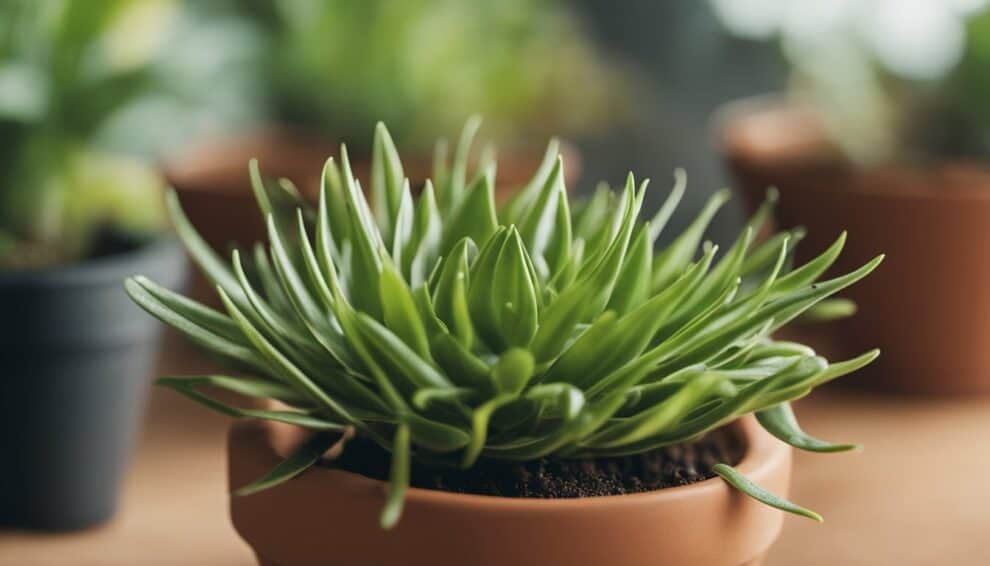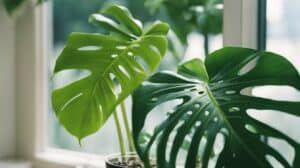Pincushion Peperomia, also known as Peperomia ferreyrae, is a popular houseplant that belongs to the Piperaceae family. This plant is native to South America and is commonly found in tropical regions. The Pincushion Peperomia is an easy-to-care-for plant that is perfect for beginners, and it is well-known for its unique appearance.

One of the most distinctive features of the Pincushion Peperomia is its green spikes, which resemble little pincushions. These spikes are actually the plant’s leaves, and they grow in clusters on thin stems. The leaves are bright green and have a translucent quality that allows light to pass through them, giving the plant a unique glow. The Pincushion Peperomia is a slow-growing plant that can reach up to 12 inches in height, making it a great choice for small spaces.
Propagating the Pincushion Peperomia is a simple process that can be done by stem cuttings. This method involves taking a stem cutting from the parent plant and rooting it in water or soil. With proper care, the cutting will develop roots and grow into a new plant. Propagation is a great way to expand your collection of Pincushion Peperomias or to share this beautiful plant with friends and family.
Understanding Pincushion Peperomia
Species Overview
Pincushion Peperomia, also known as Peperomia ferreyrae, is a small, easy-to-grow succulent that is native to Peru. It is a member of the Piperaceae family and is related to black pepper. The plant is characterized by its unique, cylindrical leaves that grow in clusters along the stem, resembling a pincushion. The leaves are green and translucent, allowing light to penetrate through them.
Pincushion Peperomia is a popular houseplant due to its compact size and low maintenance requirements. It is also a great choice for terrariums and small containers. The plant is non-toxic to pets and children, making it a safe choice for households with pets and young children.
Ideal Growing Conditions
To grow Pincushion Peperomia successfully, it is essential to provide the right growing conditions. The plant thrives in bright, indirect light and can tolerate some direct sunlight. However, too much light can scorch the leaves. It is best to place the plant near a window that receives bright, filtered light.
Pincushion Peperomia prefers well-draining soil that is rich in organic matter. A good potting mix for this plant should be a mixture of peat moss, perlite, and sand. The plant should be watered thoroughly and allowed to dry out slightly between watering. Overwatering can cause root rot, so it is important to avoid waterlogging the soil.
Pincushion Peperomia prefers warm temperatures and can tolerate temperatures between 60°F and 80°F. The plant can be grown outdoors in USDA hardiness zones 10 to 12. However, it is best to bring the plant indoors during the winter months in cooler climates.
Overall, Pincushion Peperomia is a great choice for beginner gardeners and houseplant enthusiasts. With the right growing conditions, this plant can thrive and add a unique touch to any space.
Propagation Techniques

Leaf Cutting Method
Pincushion Peperomia is an easy-to-propagate plant. One of the best methods is the leaf cutting technique. To do this, choose a healthy leaf from the parent plant and use a sharp, sterilized knife to cut it cleanly from the stem.
Next, let the leaf dry for a few hours to allow the cut end to callous over. Once the cut end has calloused, place the leaf in a pot filled with a well-draining soil mix and water it lightly. Keep the soil moist but not waterlogged and place the pot in a warm, bright location.
Within a few weeks, the leaf should start to develop roots and new growth. Once the new growth is established, it can be transplanted into its own pot.
Stem Cutting Method
Another propagation method for Pincushion Peperomia is the stem cutting technique. To do this, choose a healthy stem from the parent plant and use a sharp, sterilized knife to cut it cleanly from the main stem.
Next, remove the lower leaves from the stem, leaving only a few at the top. Dip the cut end of the stem in rooting hormone and place it in a pot filled with a well-draining soil mix. Water the soil lightly and place the pot in a warm, bright location.
Within a few weeks, the stem should start to develop roots and new growth. Once the new growth is established, it can be transplanted into its own pot.
Both of these propagation methods are easy and effective ways to expand your collection of Pincushion Peperomia plants. With a little patience and care, you can enjoy this unique and beautiful plant in your home or garden.
Post-Propagation Care

After successfully propagating Pincushion Peperomia, it is important to take proper care of the new plants to ensure their growth and health. This section will cover the essential aspects of post-propagation care for Pincushion Peperomia, including soil and potting, watering and feeding, and light and temperature requirements.
Soil and Potting
When potting the new Pincushion Peperomia plants, it is important to use a well-draining soil mix that is rich in nutrients. A mixture of peat moss, perlite, and vermiculite can be a good choice. The pot should have drainage holes to prevent waterlogging, which can lead to root rot.
Watering and Feeding
Pincushion Peperomia plants should be watered regularly, but not excessively. The soil should be allowed to dry out slightly between waterings to prevent overwatering. Overwatering can cause the roots to rot and damage the plant. It is also important to fertilize the plants regularly with a balanced fertilizer to provide them with the necessary nutrients for healthy growth.
Light and Temperature Requirements
Pincushion Peperomia plants prefer bright, indirect light and temperatures between 60-80°F (15-27°C). Direct sunlight can cause the leaves to burn, while low light can lead to stunted growth. It is important to place the plants in a location with consistent temperatures and avoid exposing them to drafts or sudden temperature changes.
By following these simple steps of post-propagation care, Pincushion Peperomia plants can thrive and grow into beautiful, healthy plants.
Frequently Asked Questions

What is the best method to propagate Pincushion Peperomia?
The best method to propagate Pincushion Peperomia is by stem cuttings. Cut a stem that is about 3-4 inches long with a few leaves attached. Remove the leaves from the bottom half of the stem and dip the cut end in rooting hormone. Plant the cutting in a well-draining soil mix and water it lightly. Keep the soil moist and the cutting in a bright, indirect light until roots appear.
How do I care for a Happy Bean plant to prevent leaf drop?
To prevent leaf drop in a Happy Bean plant, make sure to water it appropriately. Let the top inch of soil dry out before watering and avoid overwatering. Also, make sure the plant is not exposed to cold drafts or direct sunlight, which can cause stress and lead to leaf drop.
What are the signs that my Peperomia Ferreyrae needs pruning?
Signs that your Peperomia Ferreyrae needs pruning include leggy growth, yellowing leaves, and brown or black spots on the leaves. Prune back any leggy stems to encourage bushier growth and remove any damaged or diseased leaves.
Can I propagate Peperomia Ferreyrae in water, and if so, how?
Yes, Peperomia Ferreyrae can be propagated in water. Take a stem cutting and place it in a jar of water, making sure the bottom of the stem is submerged. Change the water every few days to prevent bacteria growth and wait for roots to appear before planting the cutting in soil.
Why is my Pincushion Peperomia becoming leggy, and what can I do about it?
Pincushion Peperomia can become leggy if it is not getting enough light or if it is planted in a soil mix that is too rich. To prevent leggy growth, make sure the plant is getting enough bright, indirect light and plant it in a well-draining soil mix. You can also prune back any leggy stems to encourage bushier growth.
How often should I water my Peperomia Ferreyrae for optimal growth?
Peperomia Ferreyrae should be watered when the top inch of soil is dry to the touch. Water thoroughly, allowing the excess water to drain out of the pot, and avoid letting the plant sit in standing water. In general, it is better to underwater than overwater Peperomia Ferreyrae.












